Religion Hinduism Name Lala Rai | Role Indian Politician | |
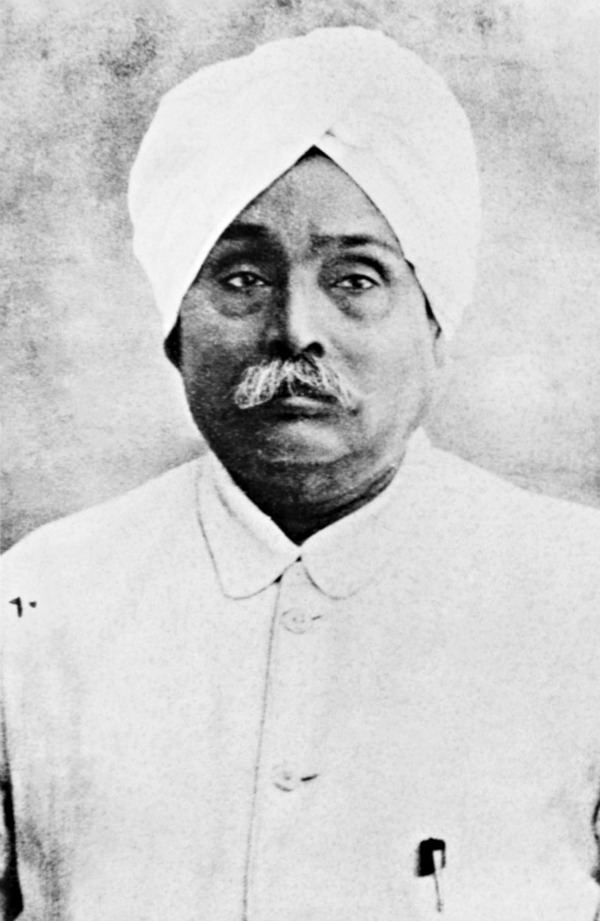 | ||
Organizations founded Punjab National Bank, Servants of the People Society, All India Trade Union Congress Education Government College University, Government Higher Secondary School, Rewari Books Unhappy India, England's debt to India, Young India; an interpreta, The political future of I, Arya Samaj Similar People | ||
Parents Radha Krishan, Gulab Devi | ||
Lala lajpat rai
Lala Lajpat Rai pronunciation , (28 January 1865 – 17 November 1928) was an Indian Punjabi author and politician who is chiefly remembered as a leader in the Indian independence movement. He was popularly known as Punjab Kesari. He was one third of the Lal Bal Pal triumvirate. He was also associated with activities of Punjab National Bank and Lakshmi Insurance Company in their early stages. He sustained serious injuries by the police when leading a non-violent protest against the Simon Commission and died less than three weeks later. His death anniversary (17 November) is one of several days celebrated as Martyrs' Day in India.
Contents
- Lala lajpat rai
- Personalities of india lala lajpat rai film no 215
- Early life
- Nationalism
- Travel to America
- Demand for separate state for Muslims
- Protests against Simon Commission
- Death
- Movements and institutes founded by Lala Lajtpat Rai
- Monuments and institutes founded in memory of Lala Lajtpat Rai
- Works
- References
Personalities of india lala lajpat rai film no 215
Early life
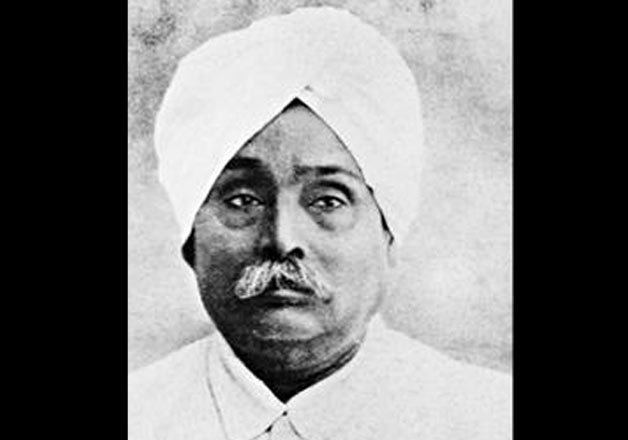
Lajpat Rai was born on 28 January 1865 in a Hindu Aggarwal, a community that claims its descent from the legendary Maharaja Agrasen of Agroha, as a son of Urdu and Persian government school teacher Munshi Radha Krishan Agrawal and his wife Gulab Devi Agrawal, in Dhudike (now in Moga district, Punjab). In 1877, he was married to Radha Devi Agrawal, with whom had two sons, Amrit Rai Agrawal and Pyarelal Agrawal, and a daughter, Parvati Agrawal.
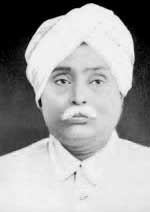
In the late 1870s, his father was transferred to Rewari, where he had his initial education in Government Higher Secondary School, Rewari (now in Haryana, previously in joint Punjab), where his father was posted as an Urdu teacher. During his early life, Rai's liberal views and belief in Hinduism were shaped by his father and deeply religious mother respectively, which he successfully applied to created a career of reforming the religion and Indian policy through politics and journalistic writing. In 1880, Latpat Rai joined Government College at Lahore to study Law, where he came in contact with patriots and future freedom fighters, such as Lala Hans Raj and Pandit Guru Dutt. While studying at Lahore he was influenced by the Hindu reformist movement of Swami Dayanand Sarasvati, became a member of existing Arya Samaj Lahore (founded 1877) and founder editor of Lahore-based Arya Gazette. When studying law, he became a bigger believer in the idea that Hinduism, above nationality, was the pivotal point upon which an Indian lifestyle must be based. He believed, Hinduism, led to practices of peace to humanity, and the idea that when nationalist ideas were added to this peaceful belief system, a secular nation could be formed. His involvement with Hindu Mahasabha leaders gathered criticism from the Naujawan Bharat Sabha as the Mahasabhas were non-secular, which did not conform with the system laid out by the Indian National Congress. This focus on Hindu practices in the subcontinent would ultimately lead him to the continuation of peaceful movements to create successful demonstrations for Indian independence.

In 1884, his father was transferred to Rohtak and Rai came along after the completion of his studies at Lahore. In 1886, he moved to Hisar where his father was transferred, and started to practice law and became founding member of Bar council of Hisar along with Babu Churamani. Since childhood he also had a desire to serve his country and therefore took a pledge to free it from foreign rule, in the same year he also founded Hisar district branch of nationalist Indian congress and reformist Arya Samaj with Babu Churamani (lawyer), three Tayal brothers (Chandu Lal Tayal, Hari Lal Tayal and Balmokand Tayal), Dr. Ramji Lal Hooda, Dr. Dhani Ram, arya samaji Pandit Murari Lal, Seth Chhaju Ram Jat (founder of Jat School, Hisar) and Dev Raj Sandhir. In 1888 and again in 1889, he had the honor of being one of the four delegates from Hisar to attend the annual session of the Congress at Allahabad, along with Babu Churamani, Lala Chhabil Das and Seth Gauri Shankar. In 1892, he moved to Lahore to practice before the Lahore High Court. To shape the political policy of India to gain independence, he also practiced journalism and was a regular contributor to several newspapers including The Tribune. In 1886, he helped Mahatma Hansraj to establish the nationalistic Dayananda Anglo-Vedic School, Lahore which was converted to Islamia College (Lahore) by Islamist zealots after 1947 partition of India.
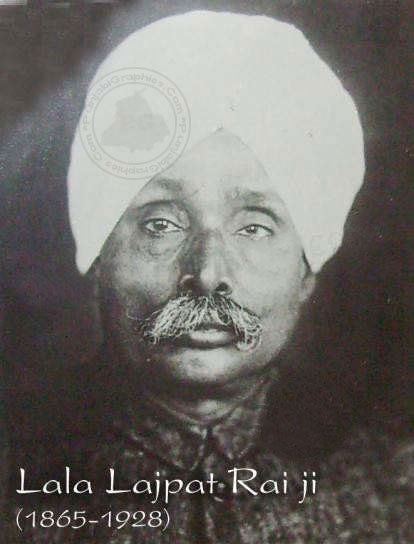
In 1914, he quit law practice to dedicated himself to the freedom of India and went to Britain in 1914 and then to the USA in 1917. In October 1917, he founded the Indian Home Rule League of America in New York. He stayed in the USA from 1917 to 1920.
Nationalism
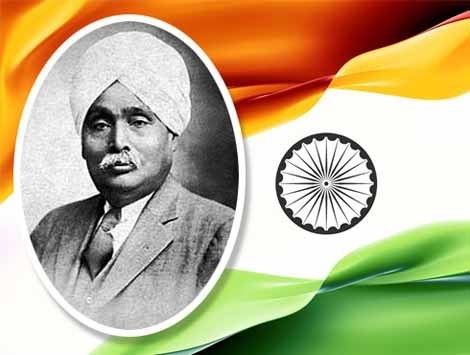
After joining the Indian National Congress and taking part in political agitation in the Punjab, Lajpat Rai was deported to Mandalay, Burma (now Myanmar), without trial in May 1907. In November, however, he was allowed to return when the viceroy, Lord Minto, decided that there was insufficient evidence to hold him for subversion. Lajpat Rai's supporters attempted to secure his election to the presidency of the party session at Surat in December 1907, but elements favouring co-operation with the British refused to accept him, and the party split.
Graduates of the National College, which he founded inside the Bradlaugh Hall at Lahore as an alternative to British institutions, included Bhagat Singh. He was elected President of the Indian National Congress in the Calcutta Special Session of 1920. In 1921, He founded Servants of the People Society, a non-profit welfare organisation, in Lahore, which shifted based to Delhi after partition, and has branches in many parts of India.
Travel to America
Lajpat Rai travelled to the US in 1907, and then returned during World War I. He toured Sikh communities along the US West Coast; visited Tuskegee University in Alabama; and met with workers in the Philippines. His travelogue, The United States of America (1916), details these travels and features extensive quotations from leading African American intellectuals, including W.E.B. Du Bois and Fredrick Douglass. While in America he had founded the Indian Home Rule League in New York and a monthly journal Young India and Hindustan Information Services Association. He had petitioned the Foreign affiars committee of Senate of American Parliament giving a vivid picture of maladministration of British Raj in India, the aspirations of the people of India for freedom amongst many other points strongly seeking the moral support of the international community for the attainment of independence of India. The 32 page petition which was prepared overnight was discussed in the senate of American Parliament during October 1917.
Demand for separate state for Muslims
He controversially demanded "a clear partition of India into a Muslim India and Hindu State India" in The Tribune on 14 December1923.
Protests against Simon Commission
In 1928, the British government set up the Commission, headed by Sir John Simon, to report on the political situation in India. The Indian political parties boycotted the Commission, because it did not include a single Indian in its membership, and it met with country-wide protests. When the Commission visited Lahore on 30 October 1928, Lajpat Rai led silent march in protest against it. The superintendent of police, James A. Scott, ordered the police to lathi (baton) charge the protesters and personally assaulted Rai. Despite being injured, Rai subsequently addressed the crowd and said, "I declare that the blows struck at me today will be the last nails in the coffin of British rule in India".
Death
He did not fully recover from his injuries and died on 17 November 1928 of a heart attack. Doctors thought that Scott's blows had hastened his death. However, when the matter was raised in the British Parliament, the British Government denied any role in Rai's death. Although Bhagat Singh did not witness the event, he vowed to take revenge, and joined other revolutionaries, Shivaram Rajguru, Sukhdev Thapar and Chandrashekhar Azad, in a plot to kill Scott. However, in a case of mistaken identity, Bhagat Singh was signalled to shoot on the appearance of John P. Saunders, an Assistant Superintendent of Police. He was shot by Rajguru and Bhagat Singh while leaving the District Police Headquarters in Lahore on 17 December 1928. Chanan Singh, a Head Constable who was chasing them, was fatally injured by Azad's covering fire.
This case of mistaken identity did not stop Bhagat Singh and his fellow-members of the Hindustan Socialist Republican Association from claiming that retribution had been exacted.
Movements and institutes founded by Lala Lajtpat Rai
Lajpat Rai was a heavyweight veteran leader of the Indian Nationalist Movement, Indian independence movement, Hindu reform movements and Arya Samaj, who inspired young men of his generation and kindled latent spirit of patriotism in their hearts with journalistic writings and lead-by-example activism. Young men, such as Chandrasekhar Azad and Bhagat Singh, were driven to sacrifice their lives for the freedom of their Motherland following Rai's example.
In late 19th and early 20th century Lala Lajpat Rai himself was founder of many organisations, including Arya Gazaette are Lahore, Hisar congress, Hisar Arya Samaj, Hisar Bar Council, national DAV managing Committee. Lala Lajpat Rai was also head of the "Lakshmi Insurance Company," and commissioned the Lakshmi Building in Karachi, which still bears a plaque in remembrance of him. Lakhsmi Inurance Company was merged with Life Insurance Corporation of India when en masse nationalisation of Life Insurance business happened during 1956.
In 1927, Lajpat Rai established a trust in her memory to build and run a tuberculosis hospital for women, reportedly at the location where his mother, Gulab Devi, had died of tuberculosis in Lahore. This became known as the Gulab Devi Chest Hospital and opened on 17 July 1934. Now the Gulab Devi Memorial hospital is one of the biggest hospital of present Pakistan which services over 2000 patients at a time as in patients.
Monuments and institutes founded in memory of Lala Lajtpat Rai
Erected in the early 20th century, a statue of Lajpat Rai at Lahore, was later to moved central square in Shimla after the partition of India. In 1959, the Lala Lajpat Rai trust was formed on the eve of his Centenary Birth Celebration by a group of Punjabi philanthropists (including R.P Gupta and B.M Grover) who have settled and prospered in the Indian State of Maharashtra, which runs the Lala Lajpatrai College of Commerce and Economics in Mumbai. Lala Lajpat Rai Memorial Medical College, Meerut is named after him. In 1998, Lala Lajpat Rai Institute of Engineering and Technology, Moga was named after him. In 2010, the Government of Haryana set up the Lala Lajpat Rai University of Veterinary & Animal Sciences at in Hisar in his memory.
Lajpat Nagar and Lala Lajpat Rai square with is statue in Hisar; Lajpat Nagar and Lajpat Nagar Central Market in New Delhi, Lajpat Rai Market in Chandani Chowk, Delhi; Lala Lajpat Rai Hall of Residence at Indian Institutes of Technology (IIT) in Kanpur and Kharagpur; Lala Lajpat Rai Hospital in Kanpur; the bus terminus, several institutes, schools and libraries in his hometown of Jagraon are named in his honor. Further, there are several roads named after him in numerous metropolis and other towns of India.
Works
Along with founding Arya Gazaette as its editor, he regularly contributed to several major Hindi, Punjabi, English and Urdu newspapers and magazines. He also authored the following published books.
